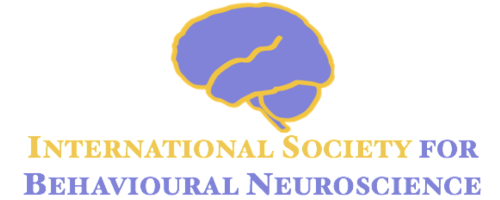18th Annual Meeting of ISBN
Date: Tues, June 1 – Sat, June 5, 2010
Place: Collioure, France
Organizer: Tomas Paus
Site: Collioure is a Mediterranean seaside town in France, a few kilometers north of the Spanish border.
It has an easy access (two airports for European flights: Perpignan in France, Girona in Spain; one international airport: Barcelona).
Meeting address:
Centre Culturel de Collioure Rue Jules Michelet 66190 CollioureAn online map of this address can be found here.
Here is an aerial view and a building view of the Centre.
Final schedule for ISBN 2010 (June 1-4) in Collioure, France
Tuesday (June 1st)
9:30 am – Welcome by Michel Moly, Mayor of Collioure
– Introduction to the Meeting by Tomas Paus
10:00 am – 1:00 pm – SYMPOSIUM: Understanding Non-motor symptoms of Parkinson’s disease
Organizer: Antonio P. Strafella
Summary: In the last few years, Non-Motor symptoms like executive dysfunction and impulse control disorders have increasingly been reported inParkinson’s disease (PD) patients. Given the social implications, these disorders represent a cause of significant distress not only for the patients but mostly their families. To date, the mechanisms underlying cognitive abnormalities and behavioral addictions in PD are poorly understood. Proposed mechanisms include abnormal functioning of mesolimbic structures resulting in dysregulation of dopamine.
(1) Frontal lobe function and dysfunction in PD. Dr. A Owen
(2) fMRI correlates of executive dysfunction in PD. Dr. O Monchi
(3) Impulse control disorders in PD and contribution from PET imaging. Dr. Antonio P. Strafella
(4) fMRI studies of reward and cognition in PD. Dr. J. Rowe
(5) Parkinson’s disease as a disconnection syndrome: Visuospatial function. Dr. A. Cronin-Golomb
4:00 pm – 5:20 pm – One Open paper Followed by Three Works in progress
Alison Lee and Dorothy Robertson – Body position sense in hemi-Parkinson’s disease
Alison Wadely and Alison Lee – Sleep and hemi-Parkinson’s disease: contrasting performance on a line bisection test for left-onset and right-onset PD groups
Ilana Hepner, M Slavin, M Williams, W Wen & P Sachdev – The mirror neuron system in patients with frontal lobe dysfunction and healthy subjects
Anna Mitchell and Laurie Miller – Visual memory processing after medial thalamic lesions in humans and non-human primates
Â
8:00 pm – 10:00 pm – Welcome reception at Chateau Royale de Collioure
Wednesday (June 2nd)
9:00 am – 12:00 pm – Traditional Paper Session
Tirin Moore Neural Mechanisms of Visual Stability and Visual Constancy Across Saccadic Eye Movements
Mazyar Fallah** – Neural mechanisms of object-based attention
Romina Palermo, Megan L. Willis, Davide Rivolta, C. Ellie Wilson, & Andrew J. Calder – Holistic coding of identity and expression in congenital prosopagnosia
Irina M. Harris, Zo Terpening, Nora C. Breen, John D. G. Watson – Dissociations between implicit and explicit recognition of objects from unconventional views following lesions to the right parietal lobe
Philip Servos – The Neural Substrates of the Touch-Induced Visual Illusion Marie T. Banich & Kristen L. Mackiewicz Neural Mechanisms Involved in the Cognitive Control of Information in Working Memory
10:40 – Coffee Break
Julio Martinez-Trujillo** and Therese Lennert – Prefrontal cortical neurons encode distance between ordinal stimulus representations during target selection
Karen M. Rodrigue** – The role of vascular risk in cognitive aging and structural changes to the aging brain
1:00 pm – 7:00 pm – Bus trip to Villefrance de Conflent and Saint Martin du Canigou
8:00 pm – ISBN dinner at “Le Neptune”
Thursday (June 3rd)
9:00 am – 10:00 am – Presidential talk by Professor Gunter Schumann on “Genetics of Addiction”
11:00 am – 12:20 pm – Works in Progress
Sandy Neargarder, Daniel R. Seichepine, Marlyn Colon, Grover C. Gilmore, and Alice Cronin-Golomb – Contrast Sensitivity Loss in AD Patients Impacts the Ability to Locate a Pill on the Floor
Kristen M. Kennedy, Karen M. Rodrigue, Andrew C. Hebrank, Gerard N. Bischof, & Denise C. Park – Hippocampal Volume Modifies Age-Related Activation Pattern in a Subsequent Memory Paradigm
Andrea Protzner, TA Valiante, C McCormick, M Cohn, MP McAndrews – Brain Signal Complexity in Temporal Lobe Epilepsy: A Noisy Brain is a Healthy Brain
Gabriel Leonard, A. Ptito, J. Crane, T. Burke – Developing a Normative Database for complex bimanual movements
4:00 pm – 6:00 pm – Traditional Paper Session
Mark Mapstone, Mark Abroms, and Charles J. Duffy – When Alzheimer’s Subjects Navigate In the Presence of Independently Moving Objects All Roads Will Lead to Roam
S̩verine Samson, Daniela Sammler, Amee Baird, Romain Valabr̬gue, Sylvain Cl̩ment, Sophie Dupont, & Pascal Belin РThe Relationship of Lyrics and Tunes in the Processing of Unfamiliar Songs: An fMR-Adaptation Study
Marie T. Banich, Jessica R. Andrews-Hanna, Greg C. Burgess, Kristen L. Mackiewicz, Luka Ruzic, Laurence Steinberg & Eric Claus – The Development of Cognitive Control during Adolescents
Ludise Malkova, Elizabeth West, Patrick Forcelli, Karen Gale – Differential role of basolateral amygdala and orbitofrontal cortex in reinforcer devaluation: investigation in monkeys and rats.
Cristiana Cavina-Pratesi, G Kuhn, M Ietswaart, and AD Milner, AD – The art of faking it
Laurie Miller, K. Radford, S. Lah, M. Say, and Z. Thayer – Can we Help Neurological Patients with Memory Disorders using Group-based Strategy Training?
Friday (June 4th)
9:00 am – 12:00 pm: SYMPOSIUM: White Matter: From Structure to Function (Part I)
Organizer: Tomas Paus
Summary: Axons constituting white matter carry information across spatially distinct brain regions and, as such, play a key role in the smooth functioning of the brain. In this symposium, we will address a number of issues pertinent to the development and pathology of white matter, a compartment that occupies almost a half of the human brain. Topics will include the relative contribution of myelin and axon in driving volumetric changes in white matter during puberty (Juraska, Paus), relationship between white-matter microstructure and cognitive abilities (Beaulieu), nature of abnormalities in white matter in schizophrenia (Hulshoff-Pol) and those found after concussion (Ptito). We will also point out new methodological developments relevant for in vivo imaging of axonal transport (Canals), an often-neglected function of the axon.
(1) Janice Juraska – “The structure of the rat corpus callosum from development through old age”
(2) Tomas Paus – “Sex differences in the adolescent brain: Axon, testosterone, and g ratio”
(3) Christian Beaulieu – “Diffusion tensor imaging of neurodevelopment: white matter changes with age and the link to reading and math ability”
12:00 pm – 1:00 pm – ISBN Business Meeting
3:00 pm – 6:00 pm – White Matter Symposium (Part II)
(4) Alain Ptito – “Correlation between fMRI, ERP, and DTI following mild traumatic brain injury”
(5) Santiago Canals – “Imaging axonal transport and fibre tracts with paramagnetic tracers”
(6) Hilleke Hulshof-Pol – “Structure and function along white matter tracts in health and in schizophrenia using DTI and MTR”

